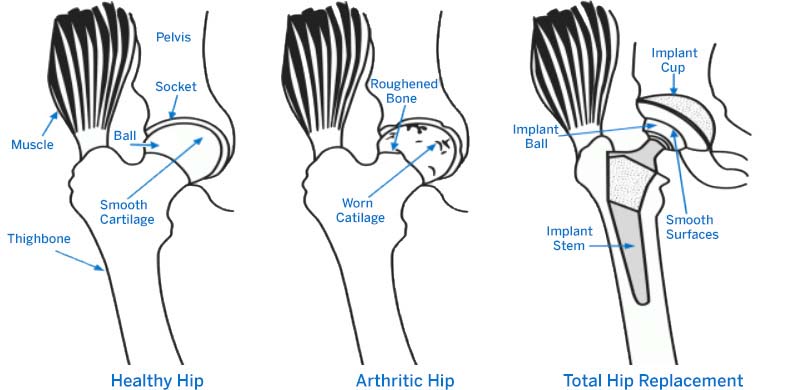Types of hip replacement procedures include traditional hip replacement minimally invasive hip replacement and anterior approach hip replacement while all three recreate the hip joint all have different recovery periods.
Different hip replacement procedures.
When a patient has arthritis of the hip the underlying bone develops spurs and irregularities which can cause pain and loss of motion.
Hip replacement surgery is a procedure in which a doctor surgically removes a painful hip joint with arthritis and replaces it with an artificial joint often made from metal and plastic components.
Anterior hip replacement surgery uses an incision at the front of the hip.
There are several different types of hip surgery that are commonly employed today ranging from repair to a full hip replacement.
This incision typically starts at the top of the pelvic bone iliac crest and extends down toward the top of the thigh.
Direct anterior hip replacement.
Some forms of hip surgery are aimed at repairing fractures somewhere on the hipbone.
Posterior hip replacement surgery uses a curved incision on the side and back of the hip.
A variation of this approach is a minimally invasive procedure in which one or two shorter incisions are used.
There are several different types of hip replacement procedures.
The direct anterior approach to the hip is becoming much more commonly performed.
The goal of using shorter incisions is to reduce pain and speed recovery.
Total hip replacement surgery is regarded as among the most valued developments in the history of orthopedics.
A total hip replacement has the ability to relieve pain and restore normal function in patients whose hip joint has been destroyed by trauma or disease in this type of surgery the damaged hip socket and ball of the femur are replaced by man made implants.
Commonly known as wear and tear arthritis osteoarthritis damages the slick cartilage that covers the ends of bones and helps joints move smoothly.
Less commonly the incision is made horizontally.
An x ray of the hips.
The traditional surgical approach to total hip replacement uses a single long incision to view and access the hip joint.
This surgical procedure has been around for a long time more than 100 years but has gained significant interest from surgeons performing total hip replacement over the course of the past decade.
Hip pinning and hip fixation are two examples.
An x ray of the pelvic area showing a metal replacement hip.
Doctors may decide to use a different.









